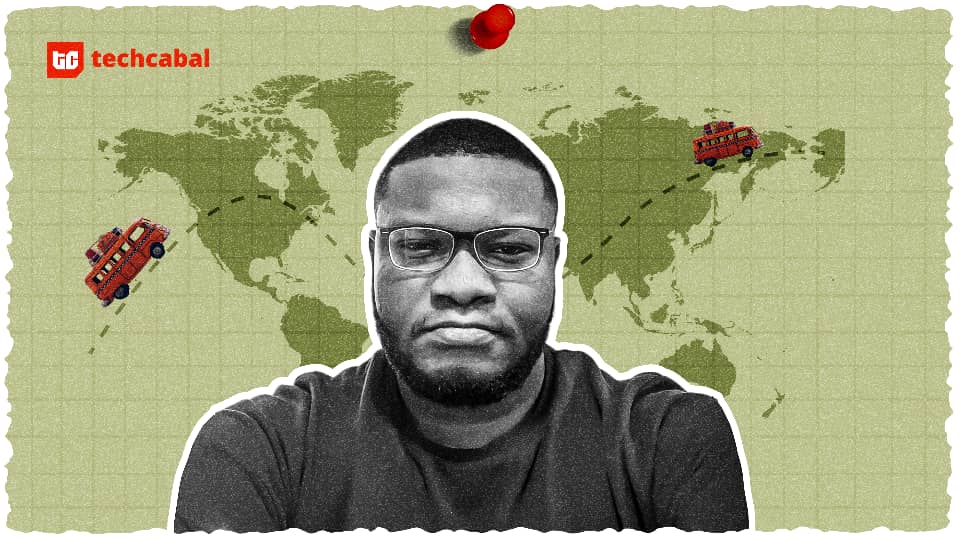SAN FRANCISCO — Amazon showed off its latest robotics and AI systems this week, presenting a vision of automation that it says will make warehouse and delivery work safer and smarter.
But the tech giant and some of the media at its Delivering the Future event were on different planets when it came to big questions about robots, jobs, and the future of human work.
The backdrop: On Tuesday, a day before the event, The New York Times cited internal Amazon documents and interviews to report that the company plans to automate as much as 75% of its operations by 2033. According to the report, the robotics team expects automation to “flatten Amazon’s hiring curve over the next 10 years,” allowing it to avoid hiring more than 600,000 workers even as sales continue to grow.
In a statement cited in the article, Amazon said the documents were incomplete and did not represent the company’s overall hiring strategy.
On stage at the event, Tye Brady, chief technologist for Amazon Robotics, introduced the company’s newest systems — Blue Jay, a setup that coordinates multiple robotic arms to pick, stow, and consolidate items; and Project Eluna, an agentic AI model that acts as a digital assistant for operations teams.
, he addressed the reporters in the room: “When you write about Blue Jay or you write about Project Eluna … I hope you remember that the real headline is not about robots. The real headline is about people, and the future of work we’re building together.”

He said the benefits for employees are clear: Blue Jay handles repetitive lifting, while Project Eluna helps identify safety issues before they happen. By automating routine tasks, he said, AI frees employees to focus on higher-value work, supported by Amazon training programs.
Brady coupled that message with a reminder that no company has created more U.S. jobs over the past decade than Amazon, noting its plan to hire 250,000 seasonal workers this year.
His message to the company’s front-line employees: “These systems are not experiments. They’re real tools built for you, to make your job safer, smarter, and more rewarding.”
‘Menial, mundane, and repetitive’
, during a press conference, a reporter cited the New York Times report, asking Brady if he believes Amazon’s workforce could shrink on the scale the paper described based on the internal report.
Brady didn’t answer the question directly, but described the premise as speculation, saying it’s impossible to predict what will happen a decade from now. He pointed instead to the past 10 years of Amazon’s robotics investments, saying the company has created hundreds of thousands of new jobs — including entirely new job types — while also improving safety.
He said Amazon’s focus is on augmenting workers, not replacing them, by designing machines that make jobs easier and safer. The company, he added, will continue using collaborative robotics to help achieve its broader mission of offering customers the widest selection at the lowest cost.
In an interview with GeekWire after the press conference, Brady said he sees the role of robotics as removing the “menial, mundane, and repetitive” tasks from warehouse jobs while amplifying what humans do best — reasoning, judgment, and common sense.
“Real leaders,” he added, “will lead with hope — hope that technology will do good for people.”
When asked whether the company’s goal was a “lights-out” warehouse with no people at all, Brady dismissed the idea. “There’s no such thing as 100 percent automation,” he said. “That doesn’t exist.”

Instead, he emphasized designing machines with real utility — ones that improve safety, increase efficiency, and create new types of technical jobs in the process.
When pressed on whether Amazon is replacing human hands with robotic ones, Brady pushed back: “People are much more than hands,” he said. “You perceive the environment. You understand the environment. You know when to put things together. Like, people got it going on. It’s not replacing a hand. That’s not the right way to think of it. It’s augmenting the human brain.”
Brady pointed to Amazon’s new Shreveport, La., fulfillment center as an example, saying the highly automated facility processes orders faster than previous generations while also adding about 2,500 new roles that didn’t exist before.
“That’s not a net job killer,” he said. “It’s creating more job efficiency — and more jobs in different pockets.”
The New York Times report offered a different view of Shreveport’s impact on employment. Describing it as Amazon’s “most advanced warehouse” and a “template for future robotic fulfillment centers,” the article said the facility uses about 1,000 robots.
Citing internal documents, the Times reported that automation allowed Amazon to employ about 25% fewer workers last year than it would have without the new systems. As more robots are added next year, it added, the company expects the site to need roughly half as many workers as it would for similar volumes of items under previous methods.
Wall Street sees big savings
Analysts, meanwhile, are taking the potential impact seriously. A Morgan Stanley research note published Wednesday — the same day as Amazon’s event and in direct response to the Times report — said the newspaper’s projections align with the investment bank’s baseline analysis.
Rather than dismissing the report as speculative, Morgan Stanley’s Brian Nowak treated the article’s data points as credible. The analysts wrote that Amazon’s reported plan to build around 40 next-generation robotic warehouses by 2027 was “in line with our estimated slope of robotics warehouse deployment.”
More notably, Morgan Stanley put a multi-billion-dollar price tag on the efficiency gains. Its previous models estimated the rollout could generate $2 billion to $4 billion in annual savings by 2027. But using the Times’ figure — that Amazon expects to “avoid hiring 160,000+ U.S. warehouse employees by ’27” — the analysts recalculated that the savings could reach as much as $10 billion per year.
Back at the event, the specific language used by Amazon executives aligned closely with details in the Times report about the company’s internal communications strategy.
According to the Times, internal documents advised employees to avoid terms such as “automation” and “A.I.” and instead use collaborative language like “advanced technology” and “cobots” — short for collaborative robots — as part of a broader effort to “control the narrative” around automation and hiring.
On stage, Brady’s remarks closely mirrored that approach. He consistently framed Amazon’s robotics strategy as one of augmentation, not replacement, describing new systems as tools built for people.
In the follow-up interview, Brady said he disliked the term “artificial intelligence” altogether, preferring to refer to the technology simply as “machines.”
“Intelligence is ours,” he said. “Intelligence is a very much a human thing.”











